Mike Sajio. Intersections. 2022
“Noise is a form of perception.
Often silenced!“
Scientists have a wider concept of noise, using the word to describe any kind of fluctuation that has an element of randomness. Noise contrasts with signal and the separation of signals from noise is the art of experimental science.
However, sometimes, the noise is the signal!!
It is hard to find an event in the history of art which is more significant than Marcel Duchamp’s re-contextualization of commodity items as ‘objet d’art’ stresses that art requires an additional conceptual effort on the part of the viewer and thereby invites the viewer to contemplate questions of perception and meaning.
Duchamp’s ‘With hidden noise’ is a ball of string between two brass plates, held together by four bolts carrying an object that was secretly added by Duchamp’s close friend Walter Arnsberg, about which Duchamp admittedly said that “to this day I have no more idea what it is than anyone!
Quite ironically, the iconic piece that was designed for action and not as a mere visual object is now silenced in plexiglass at the Philadelphia Museum of Art!!
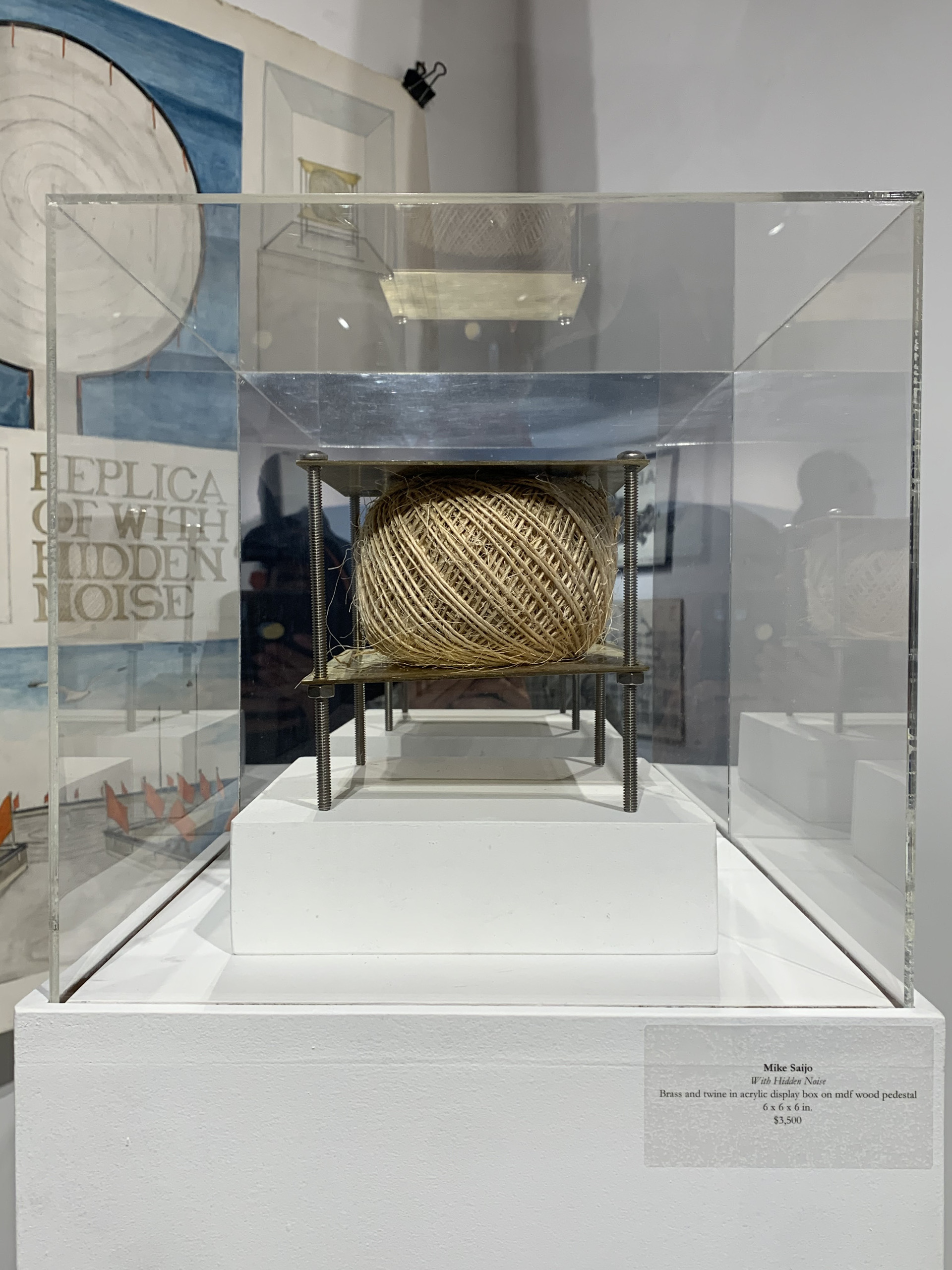
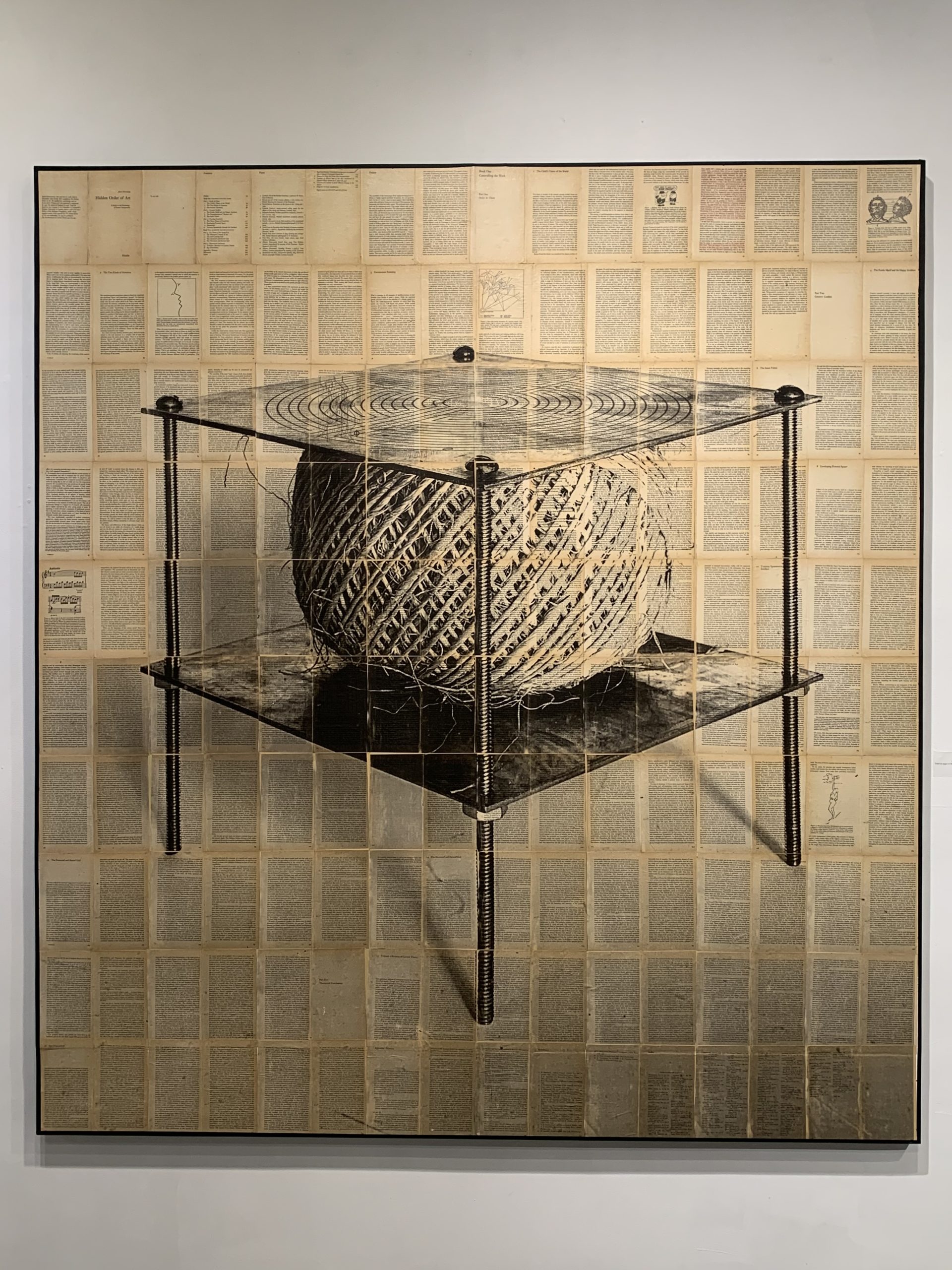
Saijo’s conceptualization of Duchamp’s work underscores ‘the overlap of history and the current’ and recreates the search for tangibility and the effort of perception, a notion which has continually surfaced to a greater or lesser degree throughout his creative career.
The chief curatorial goal of his exhibit is to address the iconic quality of the ‘readymade’ and its evolving significance in current art practice by drawing parallels to historical events and to give it a physical human experience of time, space and structure.
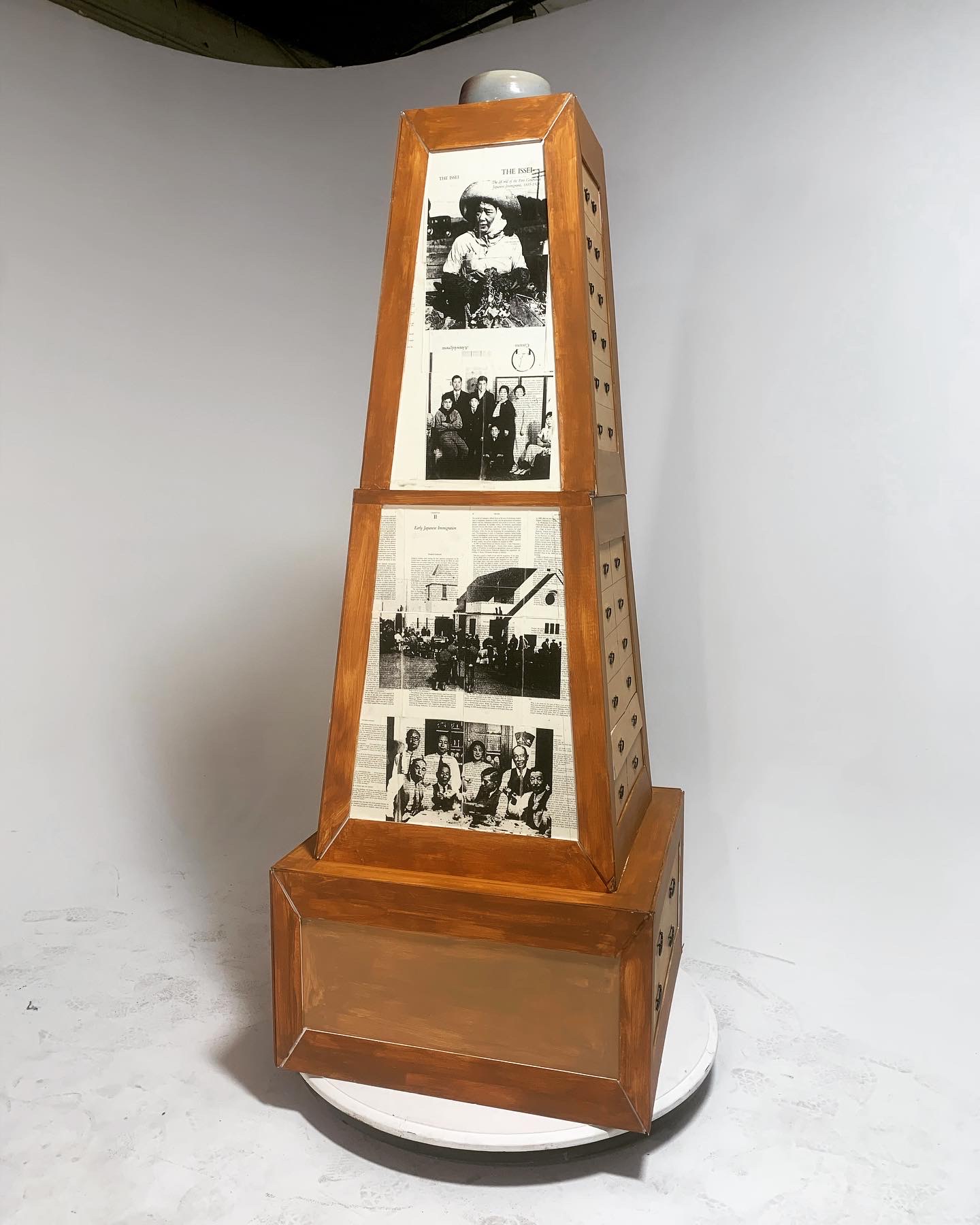


Stretching this lofty ideal further he explores the world of juxtaposition to other historical events such as the Isseis’ struggles of immigrant settlement in the United States. The intentional use of an Egyptian Obelisk, another of Saijo’s brilliance, with the ancient Japanese chest of drawers filled with “obujekuto” of the native Japanese and crowned with a ceramic bowl on top of the tall pyramid is threefold tribute to his revered ancestry.
Juxtaposition of words and imagery, the essence of his experiment has a lineage that can be traced back to centuries where the purpose was to create a ‘forced perspective’ inviting the viewers to establish connection and also to discover or impose a new meaning.
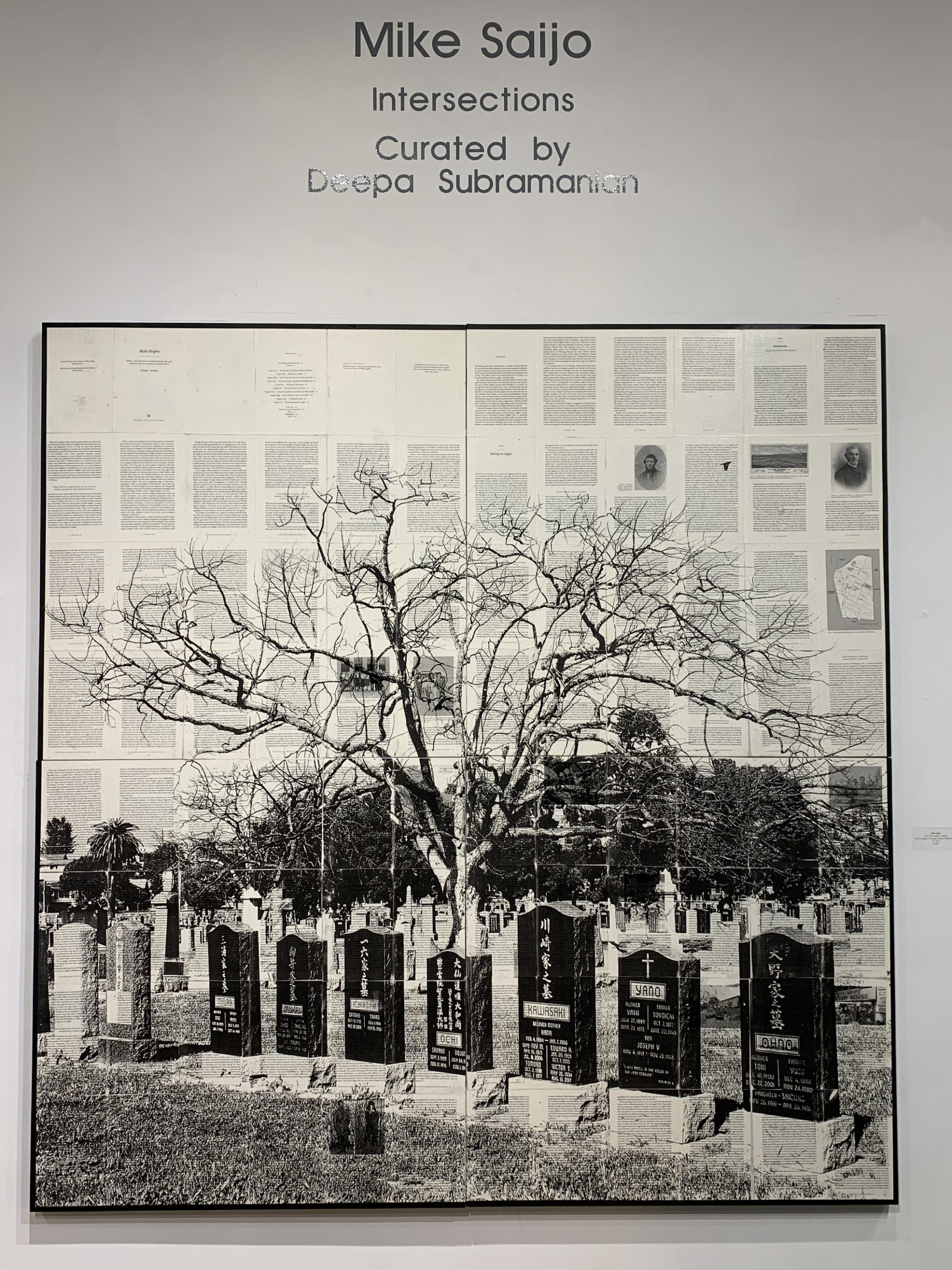
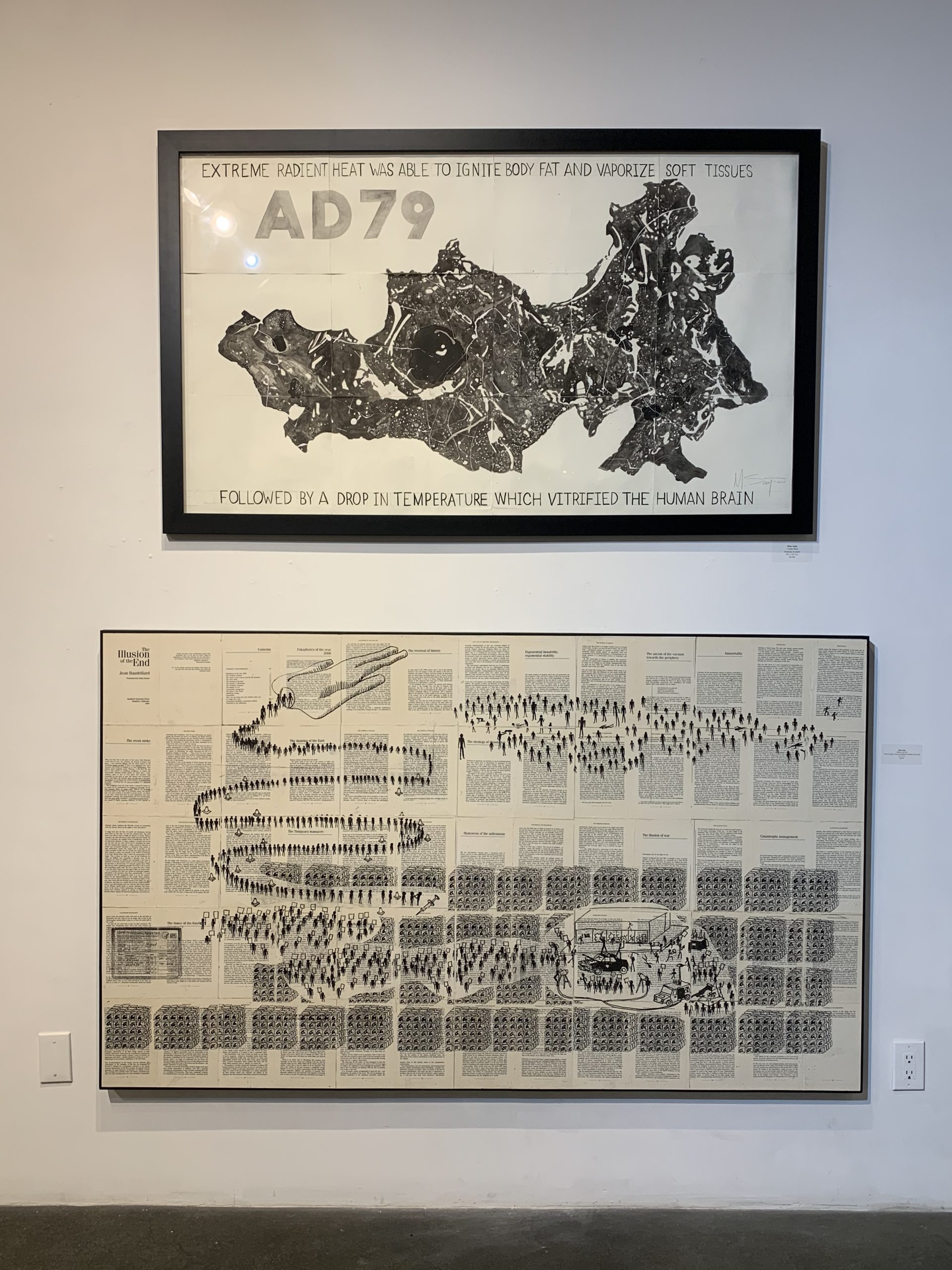
Illusion of the End
Oak Tree (Evergreen Cemetery), a contrasting work on a wood panel which depicts the tombs of the Japanese immigrants is in essence the unspoken narrative of the pages on George Sanchez’s “Boyle Heights”
Another significant work where he assigns a vicious serpentine quality of a snake which morphs itself into an out of body experience of the current pandemic set against the backdrop of Jean Baudrillard’s “Illusion of the End”.
The exhibit includes book pieces, paintings, digital photographs, proposal drawings, videos and sculptures.
At the very least, Saijo invites you to explore his rationale of the immaterial framework meeting concrete structure influenced by the concept of time. Visualizing time, space, and structure through the lens of human experience. A hero’s journey.
Do we want to be heard?
Or be silenced in plexi glass?